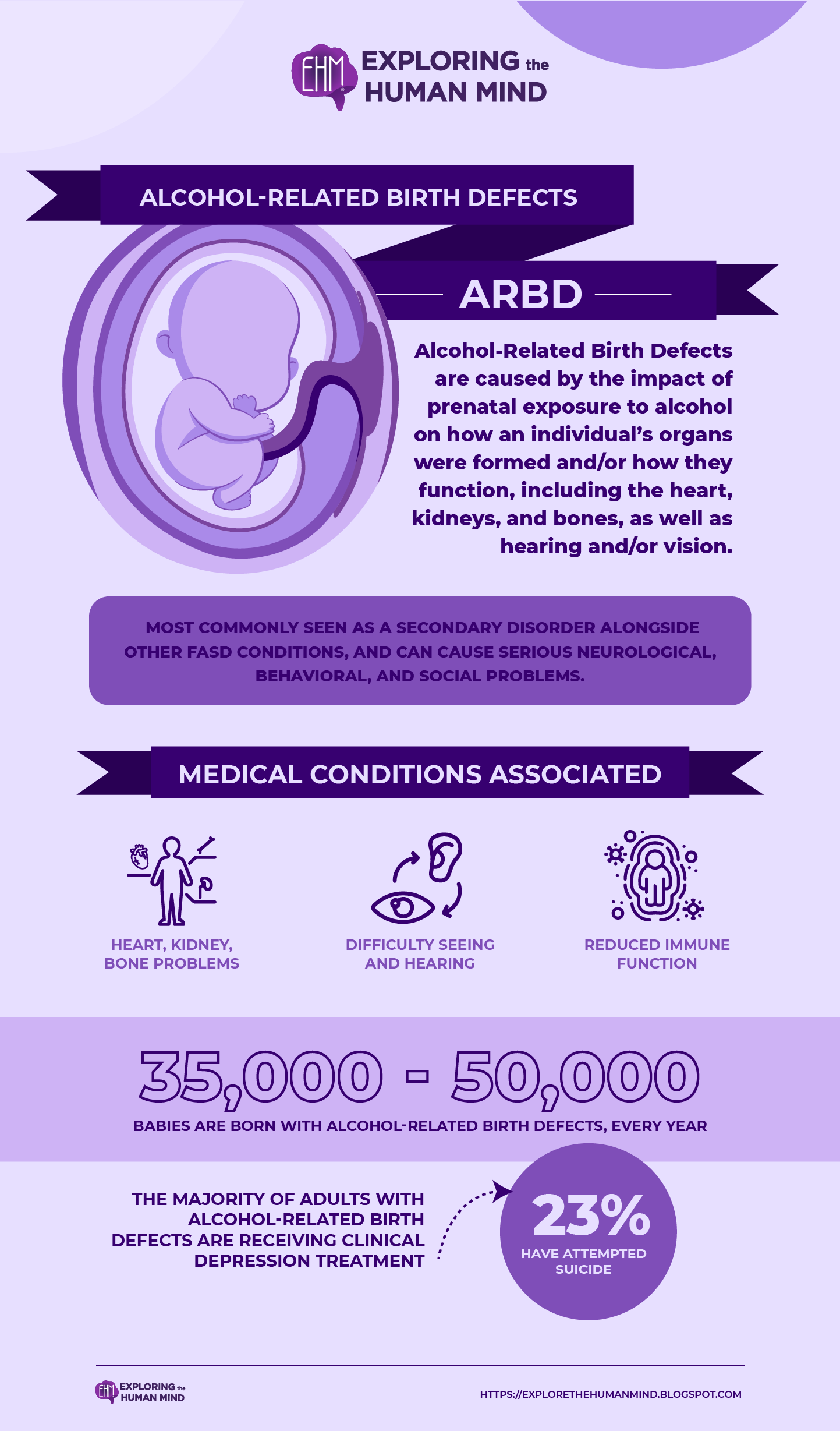Alcohol-Related Birth Defects ARBD
Medical conditions associated with prenatal alcohol exposure include:
- heart, kidney, and bone problems, as well as other malformations
- difficulty seeing and hearing
- reduced immune function
Alcohol-Related Birth Defects (ARBD) are most commonly seen as a secondary disorder alongside other FASD conditions (e.g., FAS and ARBD).
The month of May is National Alcohol-Related Birth Defects Awareness Month, and the DHH's Office for Addictive Disorders is providing information and facts about drinking while pregnant.
Birth defects include facial characteristics such as a small head circumference, smooth, wide-spaced eyes, a thin upper lip, a smooth, wide area above the upper lip, a short, upturned nose, and a flat face (most noticeable between the ages of 2 and 10). Even if a baby does not have these abnormalities, fetal alcohol syndrome can cause serious neurological, behavioral, and social problems.
Every year, 35,000 to 50,000 babies are born with alcohol-related birth defects. Attention deficits, memory deficits, hyperactivity, poor problem-solving skills, learning difficulties, immature behavior, and emotional outbursts are some of the long-term consequences of these birth defects.
The majority of adults with alcohol-related birth defects are receiving clinical depression treatment, and 23% have attempted suicide.

vectors by Freepick; graphic design by Vadot
Reference:
Common Fetal Alcohol Spectrum Disorder Definitions. (2019). Aap.org. https://www.aap.org/en/patient-care/fetal-alcohol-spectrum-disorders/common-definitions/ Fetal Alcohol Exposure | National Institute on Alcohol Abuse and Alcoholism (NIAAA). (2017). Nih.gov. https://www.niaaa.nih.gov/publications/brochures-and-fact-sheets/fetal-alcohol-exposure#:~:text=not%20be%20present.-,Alcohol%2DRelated%20Birth%20Defects%20(ARBD),hearing%3B%20and%20reduced%20immune%20function.
Alcohol-Related Birth Defects are Preventable | La Dept. of Health. (2023). La.gov. https://ldh.la.gov/news/1330






Comments
Post a Comment